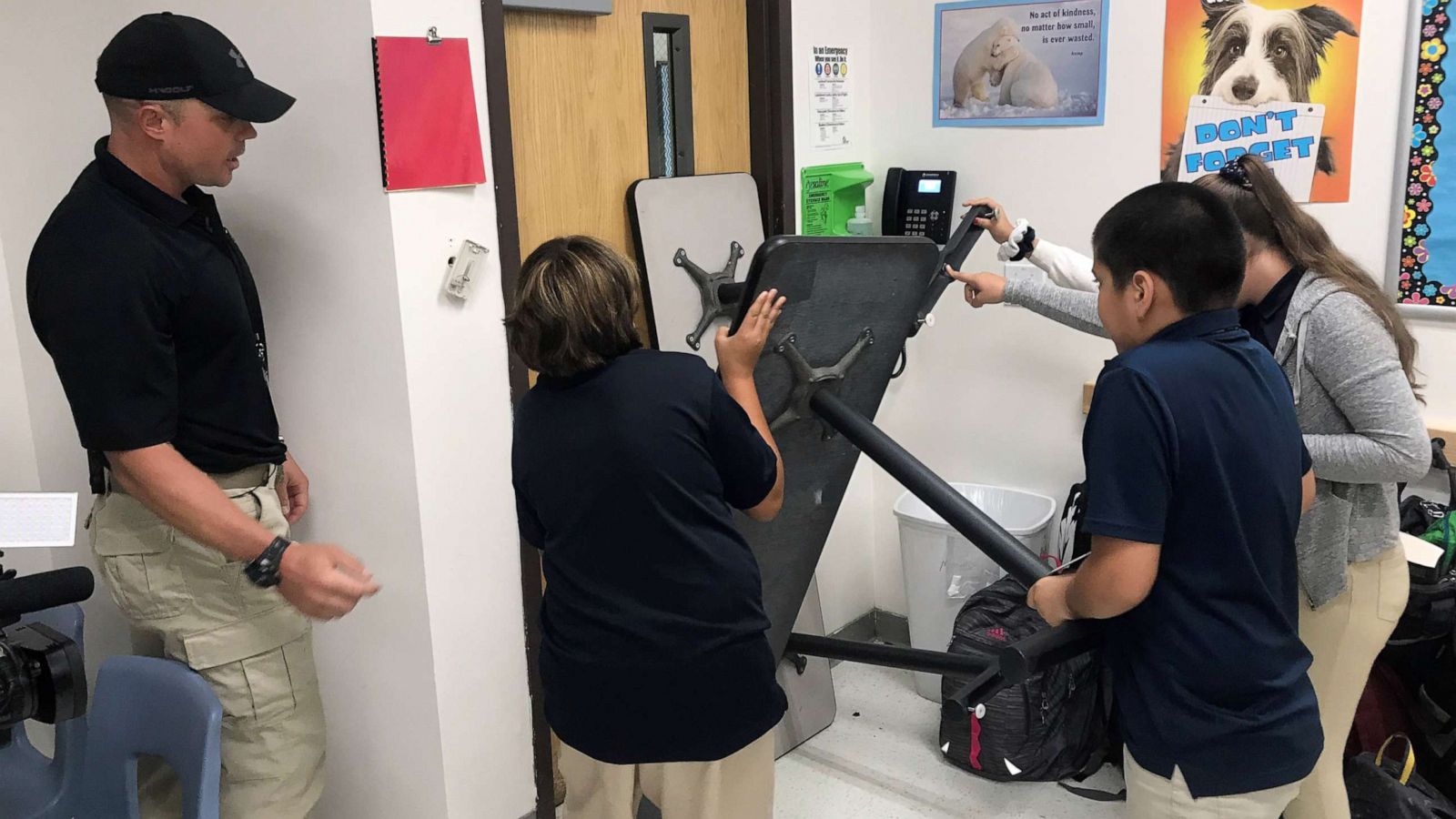Ensuring Public Security with Advanced Active Shooter Training Approaches
Ensuring Public Security with Advanced Active Shooter Training Approaches
Blog Article
Checking Out the Secret Elements and Objectives of Efficient Active Shooter Training Programs
Energetic shooter training programs are critical in equipping individuals and companies with the needed skills to respond effectively to prospective hazards. These programs integrate necessary parts, such as the "Run, Hide, Battle" strategy, practical situation simulations, and communication methods, fostering an atmosphere of readiness. They highlight psychological resilience to aid individuals browse high-stress scenarios. As we discover the complexities of these training programs, it comes to be noticeable that understanding their comprehensive nature is vital to boosting security steps and reaction capabilities. What details components absolutely define their performance?
Relevance of Active Shooter Training
Energetic shooter training programs are vital for enhancing preparedness and action despite potential hazards. These programs aim to furnish individuals, organizations, and neighborhoods with the knowledge and skills needed to successfully react to energetic shooter scenarios. The increasing frequency and extent of such cases highlight the significance of aggressive steps, as timely and enlightened feedbacks can significantly mitigate harm.
Moreover, active shooter training promotes a society of security and awareness within establishments, whether they be institutions, workplaces, or public places. Participants find out to identify very early indication and understand the importance of interaction and synergy during emergencies. This training not only stresses private security but also advertises a collective responsibility to safeguard others.
Additionally, these programs can assist reduce the anxiousness and fear that typically go along with conversations concerning potential hazards. By supplying organized support and useful approaches, individuals get self-confidence in their capacity to react suitably. Inevitably, the significance of energetic shooter training depends on its potential to save lives, lower injuries, and cultivate a prepared and durable area efficient in dealing with unpredicted challenges.
Key Components of Training Programs
Effective active shooter training programs normally include numerous key components developed to prepare participants for real-world situations. The very first element is detailed education and learning on the nature of energetic shooter cases, consisting of data, study, and psychological factors that influence aggressors. This academic foundation is crucial for promoting awareness and understanding amongst individuals.
Next, programs frequently include training on personal precaution, stressing the "Run, Hide, Battle" method. Participants find out exactly how to analyze their environment, make fast decisions, and take ideal actions throughout a dilemma. Furthermore, the addition of effective communication skills is important, as individuals should recognize exactly how to report incidents and share essential details with regulation enforcement.
One more vital part is the participation of legislation enforcement or security specialists, who offer insights right into tactical responses and the value of teamwork during a crisis. Programs need to attend to the emotional consequences of an active shooter situation, offering approaches for coping and healing.
Last but not least, recurring training and refresher training courses are crucial to make sure that expertise continues to be existing and individuals feel confident in their capacities. With each other, these essential components develop a well-shaped training program More about the author that gears up people to react efficiently to an active shooter event.
Realistic Scenario Simulations
Practical situation simulations are an important aspect of active shooter training programs, offering individuals with the opportunity to engage in hands-on method that mirrors possible real-life circumstances. These simulations boost the training experience by creating an immersive atmosphere where people can apply theoretical expertise in practical settings.
Through making use of role-playing, mock circumstances, and specialized training centers, participants experience the prompt challenges and stress factors related to an energetic shooter event. This technique of training advertises fast decision-making, teamwork, and the application of safety methods under stress. It permits -responders to establish critical abilities such as situational awareness, threat assessment, and effective evacuation procedures.
Moreover, sensible simulations aid to recognize potential weak points in individuals' feedbacks, enabling trainers to offer targeted feedback and improve overall readiness. The unification of differing situations, including different places and assaulter profiles, further improves the training experience, making certain that individuals are fully equipped to deal with a series of prospective situations.
Ultimately, these simulations offer not only to instruct however additionally to develop confidence amongst participants, cultivating a feeling of readiness that is look at here vital for efficient emergency feedback when faced with an active shooter hazard.
Communication Strategies in Training
Clear communication is vital in energetic shooter training programs, as it straight affects the effectiveness of reaction efforts throughout a situation. active shooter training. Training participants have to comprehend the protocols and treatments that will lead their actions if confronted with an energetic shooter circumstance. Developing clear lines of interaction guarantees that all people involved can pass on info promptly and precisely

Additionally, training programs must highlight the value of energetic listening. Eventually, effective communication techniques are important for preparing individuals to react decisively and cohesively in the face of an energetic shooter occurrence.

Mental Preparedness Strategies
Emotional readiness strategies are significantly acknowledged as essential components of active shooter training programs - active shooter training. These methods aim to outfit people with the mental resilience needed to respond effectively in high-stress scenarios. By fostering a mindset in harmony with prospective threats, individuals can much better take care of anxiety, stress and anxiety, and confusion throughout crucial incidents
Trick mental readiness strategies consist of scenario-based training and anxiety shot workouts. Scenario-based training immerses individuals in sensible simulations that imitate the chaos of an active shooter event, enabling them to practice decision-making under stress. This exposure aids build familiarity with emergency situation methods, boosting second-nature actions.
Anxiety shot entails steady direct exposure to stress-inducing scenarios, allowing individuals to develop coping systems. This can consist of breathing workouts, great site visualization strategies, and cognitive restructuring to reframe adverse ideas. By integrating these methods, training programs can cultivate a sense of confidence and control, which is vital in crisis scenarios.
Additionally, post-incident emotional assistance is important to deal with the psychological after-effects of an active shooter occasion. Integrating psychological wellness resources right into training programs not just prepares people for prompt reactions but also advertises long-term psychological well-being, ultimately adding to a safer and more resilient setting.
Conclusion
Finally, effective active shooter training programs are vital for boosting readiness and feedback abilities in the face of prospective risks. By including essential components such as realistic situation simulations, communication strategies, and mental preparedness techniques, these programs gear up people and organizations with the required abilities to browse high-stress situations. Inevitably, an extensive technique to training fosters strength and advertises a society of safety and security, thus adding to the general security of communities in case of an energetic shooter event.
Report this page